KLu/RNethAF
Immediately after WII Fokker S.11 developed the S.11 as a successor to the outdated De Havilland Tiger Moth for basic flight training. Pupil and Instuctor sat next to each other
plus a third passenger on the backseat. First flight on December 18, 1947. In the Netherlands, Fokker built 40 S.11's for the Neth.Air Force(LSK), plus 41 for Israel. In Italy, Macchi
built 150 S.11's licensed as M416. Fokker Brazil also built 100 for the Brazilian Air Force. The repaint is construction No: 6281 as E 38 supplied to the Neth Air Force in 1950. In
1959 it got a new scheme. In 1970 the plane was transferred as 198 to the Dutch Naval Air Service. Sold in 1975 to Mr. Sloots and registered as PH-SLO.
After a recent restoration, the PH-SLO flies from Teuge Airport again in the colors of the Klu.
Type
: Fokker S.11 Instructor
Program
: FS2004 and FSX, pack with 4 repaints
Model
: Italo D'Attomo andGiovanni Quai
Operator
: RNeth.AF, MLD, mister Sloots
Download
: Compleet aircraft




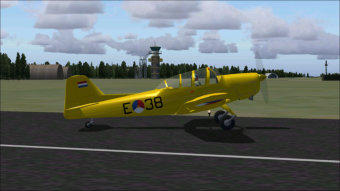
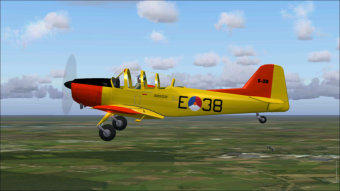
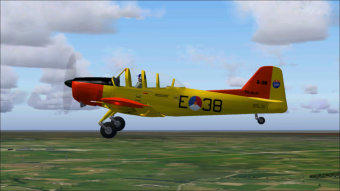
1950
1959
2014

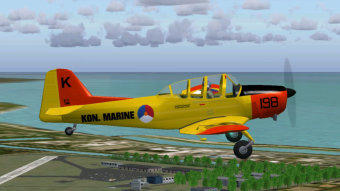
1970
Type
: Supermarine Spitfire Mk IX
Program
: FS2004 and FSX, pack with 3 repaints
Model
: A.F. Scrub
Operator
: RNeth.AF/Schreiner
Download
: Complete aircraft
After WII the Royal Netherlands Airforce took over 72 Spitfires from the RAF's war surplus, 35 fighters plus 3 two seat trainers were in service in Holland and 20 fighters in the Dutch
East Indies. The rest have been used for ground instructions. From half 1946 till 1954 they were used by the Fighterschool at Twente Airbase and as fighter at Soesterberg ,Twente
Airbases and the Dutch East Indies. From 1948 onwards the fighters in the Netherlands were replaced by Gloster Meteors, the first jet in the Dutch Airforce. First the aircraft had the
RAF-scheme with Dutch roundels and the H-registration. In 1951 the have been repainted in silver and re-registered with 3W-. The H-28 became 3W-14. In 1954 the 3W-14 was
transferred to Schreiner, painted orange registered PH-NFO and then be used as target tug from Texel Airfield. After a crash in June 1957 the aircraft was scrapped.



Type
: Supermarine Spitfire Mk IXT
Program
: FS2004 and FSX, pack with 2 repaints
Model
: A.F.Scrub
Operator
: RNeth.AF/Schreiner
Download
: Complete aircraft
After WII the Royal Netherlands Airforce took over 72 Spitfires from the RAF's war surplus. Three of them were two seat trainers.Originally they were built as standard Mk IX's
but later converted to MK IXT's. In service from March 1948 till 1951 and the 3W-22 till May 1953. It was transferred to Schreiner, painted orange, registered PH-NFN and then be
used as target tug from Texel Airfield. After a crash in May 1957 the aircraft was scrapped.


Type
: Fouga CM 170 Magister
Program
: FS2004 and FSX
Model
: Restauravia
Operator
: Belgian Airforce
Download
: Complete aircraft
In 1949, the Armée de l'Air Française (French Air Force) decided to equip their flying schools with a two-seats
jet-powered trainer. Turbomeca began with the study and construction of a engine with 400kg thrust. A suitable
motor was not available at that time. Halfway through 1952 came the Turbomeca Marboré II with the desired
thrust available. The by Air Fouga developed CM 170 made ??with these engines its first flight on 07.23.1952.
Besides France ,the CM 170 was purchased by twenty countries. The total production amounted to 929 copies.
Belgium ordered in 1958 45 Magisters to replace its T-6 Harvard and bought another 5 in 1970 from the
German Air Force. Belgium and the Netherlands had a joint pilot training. During the Advanced Flight Training a
150 hours were flown on the Magister.


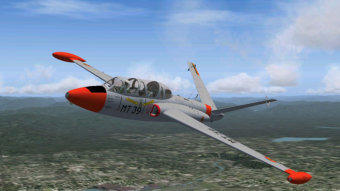


The Tiger Moth was developed from the Gipsy Moth and made its first flight in 1931. The aircraft was chosen
by the RAF as a primary trainer. After the first order of 35 aircraft it was decided for the follow-up order to
make some modifications and to make it possible to practice instrument flying. Also, a slightly heavier engine
was installed. This version was the DH, 82A flew in Netherlands for instance with the KLu (Royal Netherlands
Air Force), the MLD ( Dutch Naval Air Service) and the Rijksluchtvaartschool.
Immediately after WII, the KLu purchased a total of 56 Tiger Moths from the RAF and used them till 1963 for
pimary flight training. In 1956, three aircraft were acquired by the Naval Air Service. From mid 50 years the
Tiger Moth's were gradually replaced by the Fokker S-11. Many have been sold to civil owners.
The A-57 is a fictious registration. This aircraft was purchased in 1986 by the Royal Netherlands Air Force
Historical Flight. After a thorough restoration, it flies again. The civil registration of A-57 is PH-TYG.
Type
: De Havilland DH-82A Tiger Moth
Program
: FS2004 and FSX
Model
: Warwick Carter
Operator
: RNeth.AF
Download
: Complete aircraft



Type
: North American/Noorduyn AT-16-ND Harvard IIB
Program
: FS2004 and FSX
Model
: AI model Mike Cronin
Operator
: RNeth.AF
Download
: Complete aircraft
For the training of both military and civilian pilots the North American Harvard has been of considerable
importance. In 1935 North American introduced the NA-16. From this prototype, the trainer AT-6 Texan was
developed. Already in 1938 the plane was ordered by the USAAF, the RAF and France. The RAF renamed the
AT-6 in Harvard. Over the years a number of modifications were added which resulted in the variants Harvard
II, IIA and IIB. In total there are more than 15,000 Harvard and AT-6's built of which 1500 at Noorduyn in
Canada. Immediately after WII the LSK (later KLU, Royal Netherlands Air Force) bought 150 Harvard IIB from
the RAF, of which six units were used for spare parts. Again in 1947 20 more were bought from South Africa as
well to be used for spare parts.Once more in 1949, 50 were acquired from the RCAF. After an overhaul at
Fokker, Amsterdam these were added to the fleet.All Dutch registered Harvards were built at Noorduyn,
The B-56 (ex RAF FT176) has flown by the KLU till 1965 and then transferred to the MLD(Dutch Naval
Airservice) and got the new registration 043. In 1971 the aircraft was sold and registered as PH-KMA. In 1978
the registration was canceled.

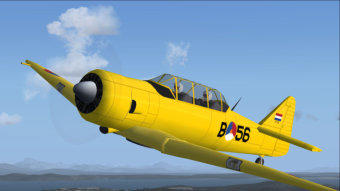

Type
: Percival Proctor IV
Program
: FS2004 and FSX, pack with 3 repaints
Model
: Keith Paine
Operator
: LSK/RNethAF
Download
: Complete aircraft
The Percival Proctor Mk.IV is a radio communication trainer and liaison aircraft from WWII, which was developed from the Percival Gull from 1932. In 1946 the LSK(later
RNethAF) purchased 11 Proctors from the WWII surplus of the RAF. Until 1952/53 they are mainly used as a radio communication trainer at Woensdrecht Air Base. They were
delivered in RAF colors, the RAF roundels were replaced by the Dutch and later the aircraft were entirely yellow painted with the exception of the W-1, which maintained its silver
color. In 1953 they were put out of service and not much later scrapped.




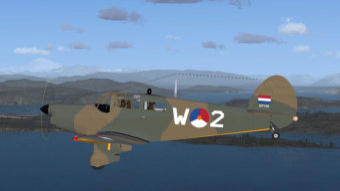
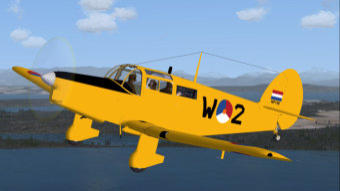
1946
1947
1950

Type
: Avro Anson Mk.1
Program
: FS2004 and FSX, pack with 2 repaints
Model
: Dave Garwood
Operator
: LSK/RNethAF
Download
: Complete aircraft
The Avro Anson is a sea pathfinder and flew in 1935 for the first time. The aircraft was developed from the civilian type Avro 652 from 1933. It had a fuselage of a welded tube
construction covered with linen and had wooden wings.In WWII Anson became the standard cost patrol- and rescue aircraft of the RAF and the RAAF. In total, there are over
10,000 Anson's built. In 1946 the LSK (later the Royal Netherlands Air Force) purchased 25 Ansons from the WWII surplus of RAF. Until 1952/53, they are mainly used for twin
engine and instrument training. They were delivered in RAF colors. The RAF roundels were replaced by the Dutch roundels and later the aircraft were painted in yellow.In 1952/53
they were replaced by the Beechcraft TC-45's. The D-8 was the former DJ661 in service with the RAF and from June 1947 till October 1953 in service with the LSK.



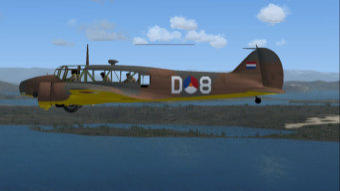
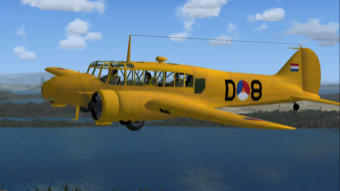
1947
1950
Type
: Airspeed A.S.10 Oxford
Program
: FS2004 and FSX, pack with 2 repaints
Model
: Keith Hackett
Operator
: LSK/RNethAF
Download
: Complete aircraft
The Airspeed Oxford A.S.10 is designed and used as a trainer for the secondairy multi-engine training at the RAF in the late thirties. It is the military version of the Airspeed Envoy
A.S.6 and made its first flight in 1937. The Oxford was from 1938 till 1946 in service with the RAF. In 1945/46 the LSK (later the Royal Netherlands Air Force) purchased total of 28
Oxfords from the WWII surplus of the RAF. The MLD(Dutch Naval Air Service) purchased five and leased another four. In the Netherlands they were also used as trainers for the
secondairy multi-engine training. The aircraft were delivered in RAF colors, the RAF roundels were replaced by the Dutch roundels and later they were painted yellow. During
1952/53 they were replaced by the Beechcraft TC-45's. The C-2 (RAF registration RR348) was in service with the LSK from May 1945 till August 1952.





1947
1950
Type
: Taylorcraft Auster Mk3
Program
: FS2004 and FSX, pack with 3 repaints
Model
: Dave Molyneaux
Operator
: LSK/RNethAF
Download
: Complete aircraft
Taylorcraft Aeroplanes Ltd began its activities in 1938 making light observation aircraft designed by the Taylorcraft Aircraft Corporation of America. Based on the Taylorcraft model B
the company developed the Taylorcraft Auster series, which were mainly used as light utility and Air Observation Post(AOP) aircraft. 1,604 high-wing Taylorcraft Auster monoplanes
were built during World War II for the armed forces of the UK and Canada.The name change to Auster occurred on 7 March 1946.
In January 1945 the Dutch Auster squadron became active as part of the RAF with 19 Austers Mk3's.Th aircraft had the RAF-livery and registration plus an orange triangle on the
nose. After WWII the LSK(later RNethAF) acquired in total 52 Austers MK3 for light utility and Air Abservation Post duties in the Netherlands and the Dutch East Indies. Four went to
the MLD(Dutch Naval Airservices). The RAF camouflage livery was maintained plus a Dutch registration. A few got a silver livery. During the fifties the Austers were replaced by
Piper Super Cub's.Many were sold to civilians and one went to the Rijkspolitie(Police).

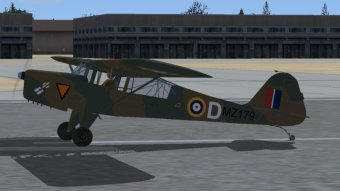

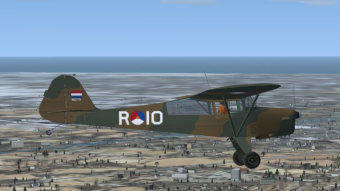

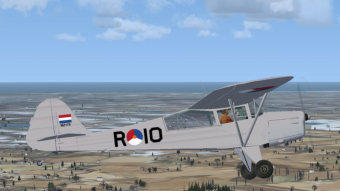

1945
1946
1950
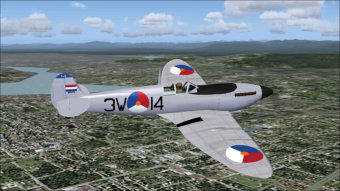
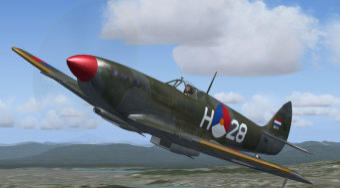
1946
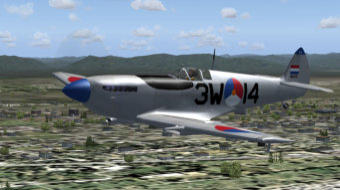
1951
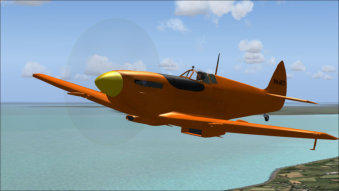
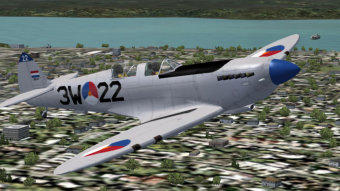
1951



Type
: De Havilland DH89a Dominie
Program
: FS2004 and FSX,
pack with 6 repaints
Model
: CBFS-team
Operator
: LSK/RNethAF
Download
: Only repaint
n July 1944 the RAF formed the No. 1316 Dutch Communications Flight. This unit was formed to be capable to set up its own transport squadron directly the war would be ended
in Holland. It was stationed at Hendon and flew with different types such as De Havilland Dominie, Percival Proctor, a Lockheed 12A and a number of ex-KLM DC-3s. The unit was
dismantled in May 1946 and four Dominies went to the Dutch Air Force (LSK, later KLu) to the No. 1 Transport Aircraft Division at Valkenburg Air Base. The aircraft were withdrawn
in 1952 except the V-1, which remained in service until 1956. In 1948, the V-3 was temporarily registered as PH-VNC for an UN mission in Palestine.
KLM Aerocarto purchased the V-3 of the Air Force at the end of 1952. First it got the registration PH-TGC and later PH-OTA and was worldwide used until 1962 for aerial
photography. The aircraft was then sold to Aero Holland which used it until 1966. A few years it was an attraction at the playground of the Avifauna bird park. In 1968 the KLu got
the aircraft again. It was restored as V-3 "Gelderland" and is today part of the collection of the Military Museum in Soesterberg.




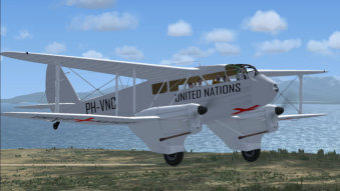
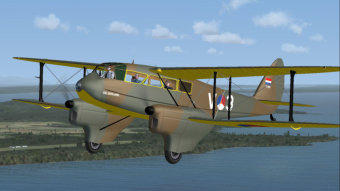
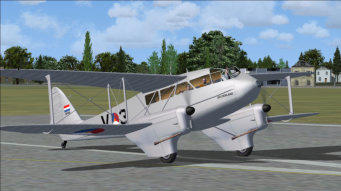
LSK 1946
LSK Silver
United Nations
The Piper Super Cub came into service in the early 1950s to replace the Auster Mk. III, which was already in use as AOP and liason aircraft.
The Super Cub entered service with the 298, 299 and 300 squadron of the Light Aircraft Group. It was mainly used for reconnaissance and artillery observation.
The aircraft was also used for training pilots for their limited Military License, which could be compared with a PPL(Private Pilot License) and
by pilots with a full Military License, who left the RNAF after their three-year contract,to maintain their flying skills.
The Piper Super Cubs were owned by the Royal Netherlands Army but flown and maintained by the Royal Netherlands Air Force.
In total, the Royal Netherlands Army had 88 L-18Cs in service, 18 L-21As and 86 L-21Bs. The last left the service in 1975.
Type
: Piper PA-18 Super Cup
Program
: FS2004 and FSX, pack with 2 repaints
Model
: AI RanchoJEN
Operator
: RNethAF
Download
: Complete aircraft



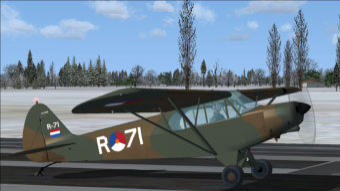

Type
: Lockheed L-10A
Program
: FS2004 and FSX
Model
: FS Design Berlin
Operator
: RNethAF
Download
: Compleet aircraft
A year after the Lockheed 10 Electra was introduced, Lockheed started to develop a smaller version with the
same engines, the Lockheed model 12 Electra Junior. The first flight took place in June 1936. From model 10
the military version 212 and a little later the L-12A was developed. The Marine Aviation Service of the Dutch
East Indies Army(ML-KNIL) was the first customer and ordered at the end of 1938 12 aircraft of the version
212. From the beginning of 1940 they were used as a trainer, light bomber, exploration- and liaision airplane.
The ML-KNIL eventually had 16 212s and 20 L-12a in its fleet. During the Second World War a few were
confiscated by the Japanese and a few were flown to Australia and got into service with the RAAF. The Royal
Netherlands Military Flying School at Jackson Air Force Base in the USA employed L-12A for the training of
Dutch war pilots. After the war, five employed by Transport command of the NethAF at Valkenburg. In 1951
the last three were sold to Sweden. The L2-38 of the National Military Museumis the former T-2, sold to
Sweden, resold to Denmark and repurchased by the National Military Museum for restoration. A total of 130
Electra Juniors were built in five different versions.
The Lockheed in National Military Museum in Soesterberg is of course an L-12A. Unfortunately, no freeware
model is from the L-12A available.I therefore used the L-10 model of FS Design Berlin as an alternative.
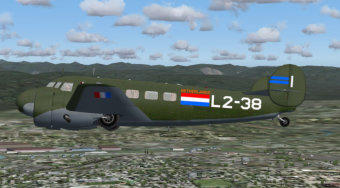


Type
: Hawker Hunter Mk.4
Program
: FS2004 and FSX, pack with 2 repaints
Model
: Dave Garwood
Operator
: RNethAF
Download
: Compleet aircraft
The Hawker Hunter designed by Sir Sydney Camm's design team made its maiden flight in 1951. A consortium of Fokker, Aviolanda, De Schelde in the Netherlands and Avions
Fairey, SABCA and FN-Herstal in Belgium was commissioned in 1953 to produce 445 aircraft under license. FN-Herstal built the engines, while Fokker, SABCA and Fairey took
care of the construction of the aircraft. Fokker built 189 Hunters Mk.4 and Mk.6 for the KLu plus 104 aircraft for the Belgians. 152 Hunters were built in Belgium. In the
Netherlands, the Hunters replaced the Gloster Meteors. The first six Hunters Mk.4 for the Royal Netherlands Air Force were built at Hawker in England, while the other 90 aircraft
were built by Fokker. The Mk.6 had a more powerful engine, sawtooth wings, improved steering and additional fuel pylons under the wings. The already delivered Mk.4 were later
brought up to Mk.6 level. From 1963 to the end of 1968, the Hunters were gradually replaced by the Lockheed F-104G Starfighter. In total1,969 Hunters were built.
From October 1960 to September 1962 the first 12 Hunter Mk.4 aircraft flew with no. 322 squadron in Dutch New Guinea at Biak. At the end of December 1961, another 14 Hunter
Mk.6 were added. Under pressure from the United Nations, Dutch New Guinea was handed over to Indonesia in 1962 and the Hunters went back to the Netherlands. The Mk.4 N-
110 flew very shortly with the flag of Papua New Guinea on its tail. A pratical joke of the ground crew. In view of the tense political situation the commander in chief was "not
amused" and the aircraft had to be brought back in its original livery.



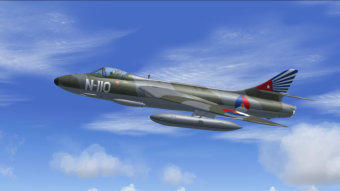
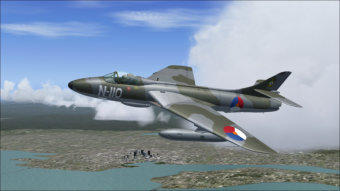
Type
: Lockheed C-130H Hercules
Program
: FS2004 and FSX
Model
: Mike Stone
Operator
: Royal Netherlands Air Force
Download
: Complete aircraft
Since 1994 The Royal Netherlands Air Force has two Lockheed C-130H-30 in its fleet. This is an extended
version of the Hercules with 2.54 meters in front of the wing and 2.03 meters behind the wing. In 2010
another two second-hand C-130H, a non-extended version, were added. These replaced four Fokkers F 60
whose transport capacity was found to be too small. The C-130Hs were first overhauled and modernized in
the UK before they joined the RNAF. It is expected that all C-130's will be replaced from 2026 onwards. A
choice has yet to be made for the replacement. The aircraft are stationed at Eindhoven Air Base.
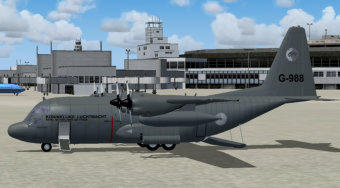


Type
: McDonnell Douglas KDC-10
Program
: FS2004 eandFSX, pack with 6 repaints
Model
: Eric Cantu (Historic Jetliners Group)
Operator
: Royal Netherlands Air Force
Download
: Only repaint
The Royal Netherlands Air Force bought 2 DC-10s from Martinair in 1995. They were converted in the USA into the KDC-10, suitable for both tank and transport aircraft and
modernized again in 2010. The aircraft were sold to the USA in 2021. To replace the KDC-10’s the Netherlands, together with its NATO partners Germany, Belgium, Norway and
the Czech Republic, bought nine Airbus A330 MRTT (Multi Role Tanker Transport), five of which are stationed at Eindhoven Air Base.
I have bundled the repaints of the DC-10s of KLM and Martinair and the KDC-10 of the Royal Netherlands Air Force in one package which you can find in the downloads under the
name: McDonnell Douglas DC-10-30 and KDC-10 Dutch pack , repaints only
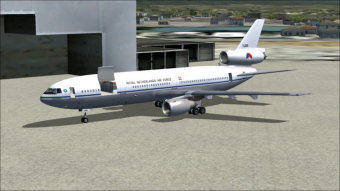


1995
2007
2019













